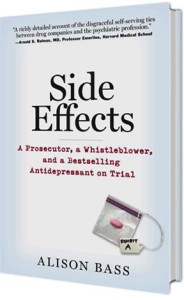Medicare and social services for vulnerable Americans are not the only programs on the chopping block with Washington’s deal to raise the debt ceiling and cut trillions of dollars in government spending. Looming ahead may be deep cuts in funding for medical and science research, and that raises the specter of growing collaboration between academic centers and industry, including pharmaceutical and medical device companies.
Even before the debt deal was reached, partnerships between Big Pharma and universities have been on the rise, according to an article in the current issue of Chronicle of Higher Education. The article, Big Pharma Finds a Home on Campus, details this growing collaboration and the “many new ethical and practice questions” it raises, including the increasing potential for conflicts of interest.
There may be some beneficial outcomes to these partnerships in the development of drugs to treat intractable diseases. But what concerns many is this: how can institutions that are increasingly reliant on funding from private companies do an adequate job of policing conflicts of interest among their own faculty? It’s akin to having the fox guard the chicken coop.
“I’m not sure that universities can police conflicts of interest when they become so reliant on [private sector] funding,” said Peter Conrad, Harry Coplan Professor of Social Sciences at Brandeis University and author of The Medicalization of Society. According to Conrad and others, academic centers are already doing a poor job of enforcing their own conflicts of interest policies. He points to the “slap on the wrist” Harvard Medical School gave Joseph Biederman for failing to disclose millions of dollars in financial ties to drug makers; see background here.
“Biederman used his name and position as a way of promoting the use of antipsychotics for childhood bipolar disorder,” Conrad said. “He was basically an entrepreneur for the bipolar diagnosis in children and using drugs that have not been tested and approved for children.”
Conrad believes such conflicts of interest will only worsen in the coming years as federal research money becomes scarcer and universities turn to industry to keep their science labs humming.
“I think this is just the beginning of the privatization of research,” he says. “It’s representative of the tilt in society towards business interests over public interests.” Conrad cited the recent Supreme Court decision that allows corporations to give as much money as they want to political candidates an another example of that tilt toward allowing commercial interests to take precedence over public interests.
Indeed, university and industry lobbyists have already succeeded in convincing the federal government to drop a key provision in the proposed new NIH guidelines for conflicts of interest among federally-funded researchers. According to Nature, a cornerstone of the new guidelines — a series of publicly accessible websites detailing financial conflicts among academic researchers — has now been dropped.
Consumer advocates have roundly criticized the move. “It greatly diminishes the amount of vigilance that the public can exercise over financially conflicted research being funded by the NIH,” said Sidney Wolfe, director of the Health Research Group at Public Citizen, in Nature.
My guess is that universities didn’t want that much transparency out of fear it might embarrass their star faculty rainmakers and stifle lucrative partnerships with industry. After all, why bite the hand that feeds you?


